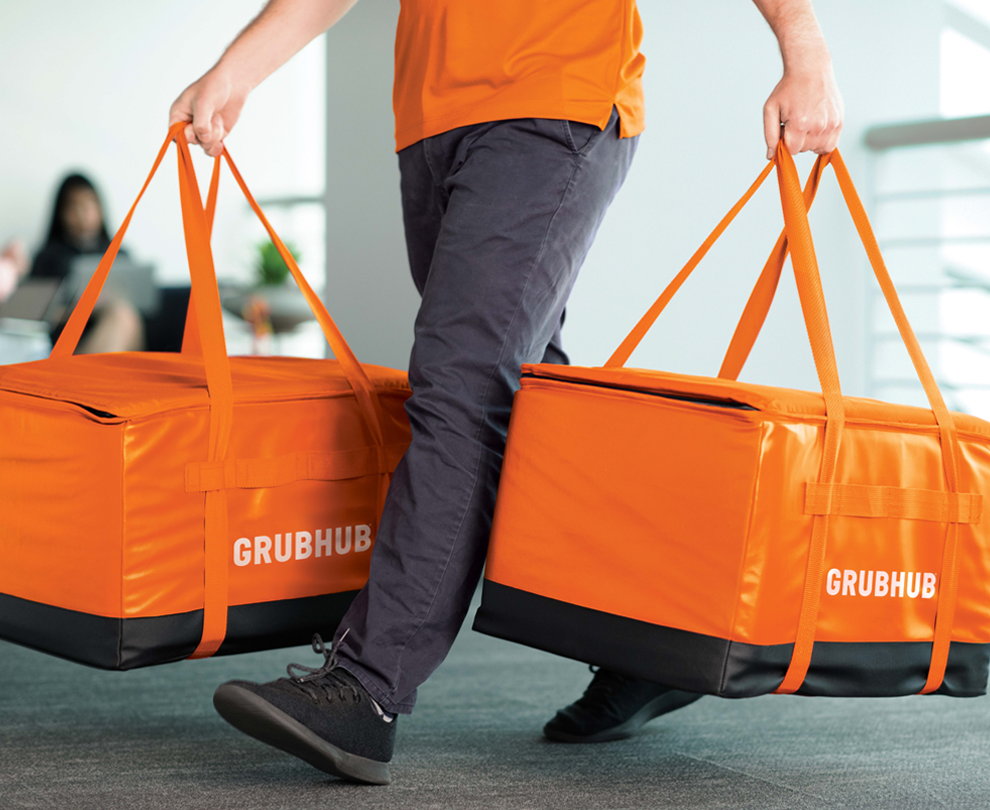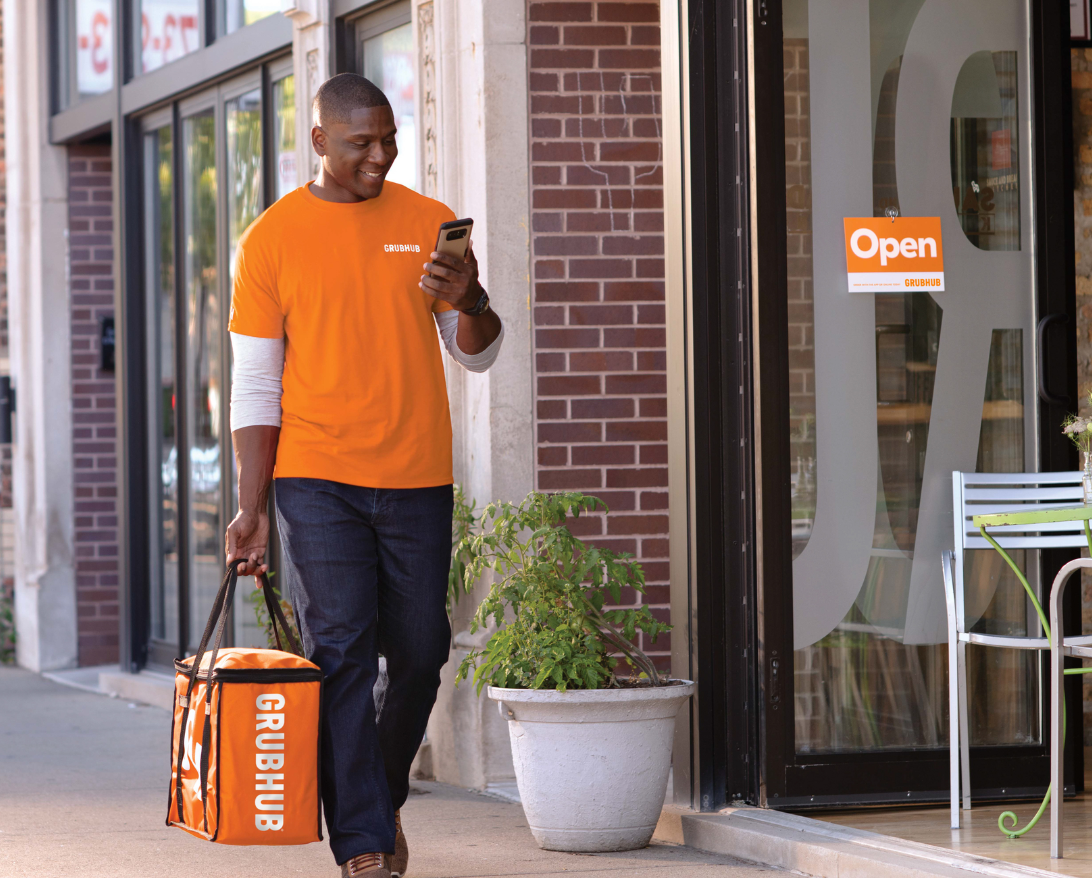Sign up for restaurant insights
The pandemic changed the way customers order from restaurants. Offering delivery and pickup has become essential for restaurants to stay competitive, shifting the way we understand restaurant growth. This change has also led to the rise of a new type of eatery: virtual restaurants.
Virtual restaurants have become one of the biggest growth opportunities in the industry. The virtual restaurant market is estimated to reach $1 trillion by 2030, proving this business type to be a reliable avenue for growth. Virtual restaurants can launch in about a quarter of the time of a physical restaurant, saving you time and money.
Read on to learn what virtual restaurants are, then be sure to download the checklist to understand exactly how you can experiment with a new brand of cuisine while growing your delivery sales.
Demystifying The Virtual Restaurant
Also known as virtual kitchens, ghost kitchens or delivery-only restaurants, the virtual restaurant concept is actually quite simple.
They are delivery-only operations that accept orders solely online—through apps and websites like Grubhub. With no need for a brick and mortar location, the restaurant only exists online.
Restaurateurs can launch a virtual restaurant to experiment with a new menu concept, brand a subset of existing menu items or capture unmet customer demands for particular food in the market. In this way, restaurants can open up a whole new “restaurant” without any additional expenditures on staff or rent.
Since all orders are placed digitally and delivered, customers don’t know (or care) that the restaurant is “virtual.” They may even be excited to try new concepts if they are put out by their favorite local restaurant. Their only concern is that the food tastes great, is easy to order and is delivered to their door.
Paving The Way To Your Own Virtual Restaurant
So what goes into creating a stellar virtual dining experience? Take a look at these steps you can follow to launch your own virtual restaurant.

Step 1: Choose Your Cuisine
Your menu can expand your existing offerings or be based on a subset of items from your current menu. You can even test out an entirely different concept—one that may even be completely different than your physical restaurant. With data provided by Grubhub, you can even pinpoint what type of food customers are searching for, but not finding, in your delivery boundary, and create a menu that fills that gap.
Once you’ve decided on what type of cuisine you want to serve, the next step is to engineer your menu. Explore how competitors price and market their cuisine, look into local diners’ ordering habits and decide how you want to source ingredients. You’ll need to compile data to calculate food costs, identify contribution margins and determine what menu items are likely to sell. After you’ve evaluated this data, the final step is to create menu prices. These prices don’t need to be set in stone – you should evaluate your business during the first few months of operations to optimize your menu.
Step 2: Create Your Brand
Now that you know what you want to sell, you need to brand your restaurant to build customer recognition. Your brand should reflect your virtual restaurant’s cuisine type and niche. Spend time deciding on brand assets like a name, logo, theme and photos – these things will be the first things diners see when they order from your restaurant.
Use your branding to convey your restaurant’s identity and distinguish it from competitors. Make sure you have a good understanding of your target customers before you finalize branding to ensure that your restaurant’s theme will resonate with them.
Step 3: Develop a delivery strategy
Virtual restaurants cannot function without delivery. Your virtual restaurant’s delivery fleet should be professional, timely and efficient. Because your restaurant doesn’t have a physical storefront, your drivers are the ones who will be interacting with customers. Ensuring you have the best drivers can make sure your brand is represented well.
Grubhub delivery can help take work off your plate by handling out-of-house services for your virtual brand. Grubhub delivery allows restaurants to expand their delivery boundaries and reach customers in a timely manner, giving diners real-time updates on their progress. Our fleet of over 300,000 drivers are experienced and professional, equipped with the right tools to make sure your cuisine reaches your customers.
Step 4: Launch Your Virtual Restaurant
So you think you’re ready to launch your virtual restaurant? Before you start cooking, make sure you have ample inventory to support your virtual restaurant staff. Your staff should be trained on how the virtual kitchen will operate, and you should have a plan on how your virtual restaurant will work in tandem with your brick and mortar location if applicable.
Launching your virtual restaurant is as simple as publishing your menu online. You can add an online ordering link to your restaurant’s website to start. Want to get your restaurant in front of eager diners instantly? You can list your virtual restaurant on a third-party delivery platform like Grubhub to get access to 33+ million customers. Listing your restaurant on Grubhub Marketplace makes it easy for customers to place an order right from any device through an app or online platform.
Grubhub partners also get access to Direct, a commission-free online ordering platform that is completely free to use. With Direct, you can list your virtual restaurant’s menu online and easily manage restaurant info from your existing Grubhub account. Direct can also integrate into your existing website, giving customers an easy way to place an order. And the cherry on top is that Direct collects customer data that you can download for free and use to better target your marketing efforts. Learn more about how Direct can help your virtual restaurant grow.
Step 5: Market your virtual brand
A virtual restaurant isn’t subjected to the same street recognition as brick and mortar restaurants. Restaurants that don’t have a physical dining room need to put in extra effort to make their presence known. Simply creating a website isn’t enough to generate a customer base. You need to market your new brand to potential customers to make them aware of your offerings.
Your marketing strategy should be holistic – covering web, email, social media and good old fashioned word of mouth. Your restaurant’s website should contain all the necessary info about your brand, featuring the menu, hours, delivery method and how to order. Modern diners use social media to explore new cuisine. Create social media pages for your restaurant on popular platforms like Instagram, Facebook and TikTok to share your creations. Once you start getting customers, collect their emails so you can send them announcements, deals and promotions to prompt them to place an order.
Just because your restaurant doesn’t have a physical location that customers can visit doesn’t mean you can’t connect with your local community. Old fashioned forms of marketing like fliers, signs and press announcements are a great way to make your presence known to your neighborhood. You can even partner with local businesses to cater an event to grow awareness of your brand.
Finally, encourage your customers to leave reviews about your restaurant on your website, Google Business page or on Grubhub. Reviews are a great way to legitimize your restaurant, especially when you’re just starting out. Plus, positive reviews can serve as free marketing for your restaurant.
Making A Virtual Restaurant Work For You
There are many exciting advantages to opening a virtual restaurant in addition to your physical restaurant.
- Obtain High Rewards For Low Investment. Virtual restaurants are efficient and save money because they grow your business without increasing overhead costs.
- Grow Delivery Sales. You can open up new channels of revenue using the same amount of staff, space and resources by operating one, or multiple, virtual restaurants out of one physical kitchen.
- Reach New Customers. By branching out with a new concept, you can reach an entirely different customer base.
- Innovate and Lead. With little risk, you are free to experiment and test out what works to create successful concepts and satisfy needs in your particular market. Also, being able to change your menu on the fly without updating printed menus or signage allows you to be flexible and creative.
- Increase Digital Presence. By living online, your brand will get valuable exposure through the Grubhub website and mobile app.
Whether you want to increase delivery sales or experiment with a new restaurant concept, a virtual restaurant can help you reach your goals with low risk and high rewards. Learn more about opening a virtual restaurant.Ready to reach new customers and grow your business with Grubhub? Sign up today!






